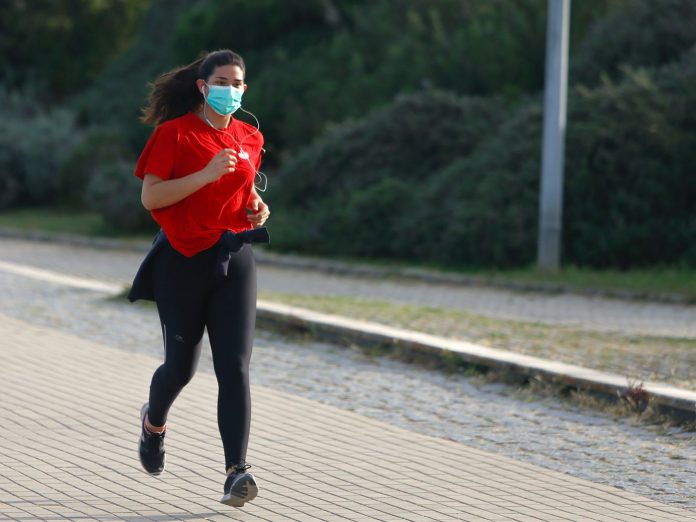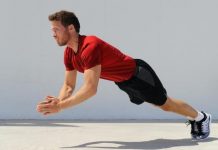With most gyms and fitness studios shuttered due to the new coronavirus, many regular exercisers are raising an important fitness question: Is exercise outside safe during the new coronavirus pandemic?
For most runners, hikers, cyclists, and other outdoor enthusiasts, exercising outside has always been part of their regular routine. But the lure of the outdoors has also become super strong for other exercisers, especially since stay-at-home orders and social distancing recommendations mean there aren’t really other opportunities to get out of the house.
Many are tempted to lace up and head out, but the increasing prevalence of COVID-19 (the illness caused by the new coronavirus) across the country makes outdoor exercise more of a question than a given. As of press time, there have been 304,826 cases and 7,616 deaths in the U.S. and its territories, according to the Centers for Disease Control and Prevention (CDC). With no FDA-approved vaccine or treatment available, preventing exposure to the virus remains the best way to avoid getting sick from it.
So, can you avoid that exposure while exercising outdoors? Is exercise outside safe, and is it even allowed? If so, can it put others at risk? Here’s what you need to know.
Can you still exercise outside during the new coronavirus pandemic?
When thinking about whether it’s okay to exercise outside or not, the first thing you have to consider is any local ordinance that might be in place regulating activities, Suzanne Judd, Ph.D., an epidemiologist at UAB School of Public Health, tells SELF. Many stay-at-home or shelter-in-place orders, including those in California, New York, Pennsylvania, and Illinois, allow outdoor activity with certain social distancing stipulations, while others like Washington, D.C., allow outdoor exercise but go a step farther by requiring any equipment to be sanitized before and after too. (In other countries, outdoor exercise is more strictly regulated. In France, for instance, outdoor activity can take no more than an hour, once a day, and must be done within a kilometer of your house.)
It’s also important to note that while these ordinances may allow outdoor activity in general, your particular type of activity may no longer have the green light, since many cities and towns have closed playgrounds, tennis courts, and basketball courts. So your regular game of pickup basketball, doubles tennis, or even calisthenics on the monkey bars may not be allowed at this time.
If your form of outdoor exercise is not prohibited, the next thing you need to consider is whether or not you can stay far enough away from people (outside of your household) when you do it, says Judd.
There are a lot of unknowns with the new coronavirus, but it is still thought to be spread primarily through person-to-person contact, according to the CDC.
“We think it’s spread by spit, phlegm that you would cough up, any mucus that would come out of your nose from sneezing,” says Judd. These respiratory droplets of an infected person can then land on the noses or mouths of someone close by, which can then be inhaled into their lungs. Or they could land on other parts of your body, and if you touch them, and then your face, that can lead to transmission too. (That said, many experts have recently begun questioning how long those respiratory droplets can hang in the air, which would make even talking near someone with the illness dangerous. And since we know that the virus can be spread before people show symptoms, it’s not as simple as staying away from people who are sick.)
That’s where social distancing comes into play. You’ve probably seen the recommendations to stay at least six feet away from others not in your household, right? Staying farther away than that makes it much less likely that infectious droplets from someone else would make their way to you, says Judd.
So, hypothetically, if you’re running by someone on a corner who has COVID-19 and they cough in your face, those viral particles can enter your mouth and make you sick. (Or they could fall on your clothes—more on that later!) But if you maintain that six-feet-or-greater berth, the viral particles will likely fall to the ground instead, says Judd.
That means that any outdoor exercise involving close contact with others outside of your household—like group runs, rides or hikes, or group sports like soccer or basketball—doesn’t pass muster during this time. Walking, running, hiking, or riding by yourself, though, should be okay, as long as you are able to keep that buffer zone between you and anyone else you encounter, Judd says.
How can you stay safe if you exercise outside?
Maintaining social distance is the most important thing you can do when you exercise outside, says Judd. So if you’re considering whether or not you should go for a run, for instance, take an honest look at how likely it is that you’ll be able to maintain that distance in your neighborhood.
“Working out and maintaining a safe social distance is going to be more challenging in a place like New York City than Birmingham, Alabama,” Judd says. If you find yourself having to pass other people—and aren’t able to do so safely while giving at least six feet of room—you might want to reconsider your outdoor activity, or move it to a less busy time.
Keeping your hands clean is also important since you tend to touch your face a lot when you sweat, says Judd. Wash your hands as the last thing you do before you leave your house, and if you’re in an apartment where you have to exit through common areas to go outside, bring a small bottle of hand sanitizer or a disinfectant wipe with you to give your hands a quick cleanse before you get started (elevator buttons or doorknobs could be touched by someone who’s sick). Be extra mindful to avoid touching things after that, like handrails and traffic signals. Maybe skip the incline pushups on a park bench. Or, if you do touch things out in the world, be sure to use hand sanitizer properly afterward.
When you get home, take off your shoes before you get inside, says Judd. If you walk on a sidewalk where someone sneezed, it’s possible your sneakers could have the virus on them. Removing sneakers at your front door means you won’t track the virus inside your house that way.
Same goes for your clothing. Change out of your workout wear as soon as you get into the house, Judd says—avoid shaking clothing first to limit the possibility of spreading any viral particles, as we previously reported. And make sure you also give your hands another good 20-second wash after coming indoors.
































